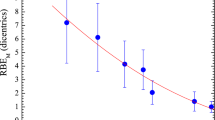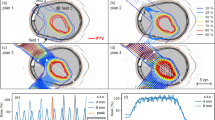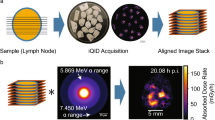Abstract
IN radiation therapy as practised in this institution at the present time, the underlying principle adopted in the planning of treatment is to give a uniform tumour dose between 4000 r. and 6000 r. To achieve this, in deep-seated lesions, a multiple field technique has to be employed, and much radiation is absorbed which contributes not to the destruction of the tumour itself but to that of the normal tissues of the body. In the following note, methods are given for integration of dosage in a volume through which a beam passes.
This is a preview of subscription content, access via your institution
Access options
Subscribe to this journal
Receive 51 print issues and online access
$199.00 per year
only $3.90 per issue
Buy this article
- Purchase on Springer Link
- Instant access to full article PDF
Prices may be subject to local taxes which are calculated during checkout
Similar content being viewed by others
References
Parker, H. M., and Honeyburne, J., Brit. J. Rad., 8, 684 (Nov. 1935).
Allibone, T. E., and Bancroft, F. E., Brit. J. Rad., 7, 65 (Feb. 1934).
Grimmett, L. G., and Read, J., Brit. J. Rad., 8, 702 (Nov. 1935).
Author information
Authors and Affiliations
Rights and permissions
About this article
Cite this article
HAPPEY, F. Volume Integration of Dosage for X- and β-Radiation. Nature 145, 668–669 (1940). https://doi.org/10.1038/145668b0
Issue Date:
DOI: https://doi.org/10.1038/145668b0
This article is cited by
-
Calculation of Energy Absorbed in Irradiated Tissue
Nature (1940)
-
Total Energy Absorption in Biological Objects
Nature (1940)
Comments
By submitting a comment you agree to abide by our Terms and Community Guidelines. If you find something abusive or that does not comply with our terms or guidelines please flag it as inappropriate.



